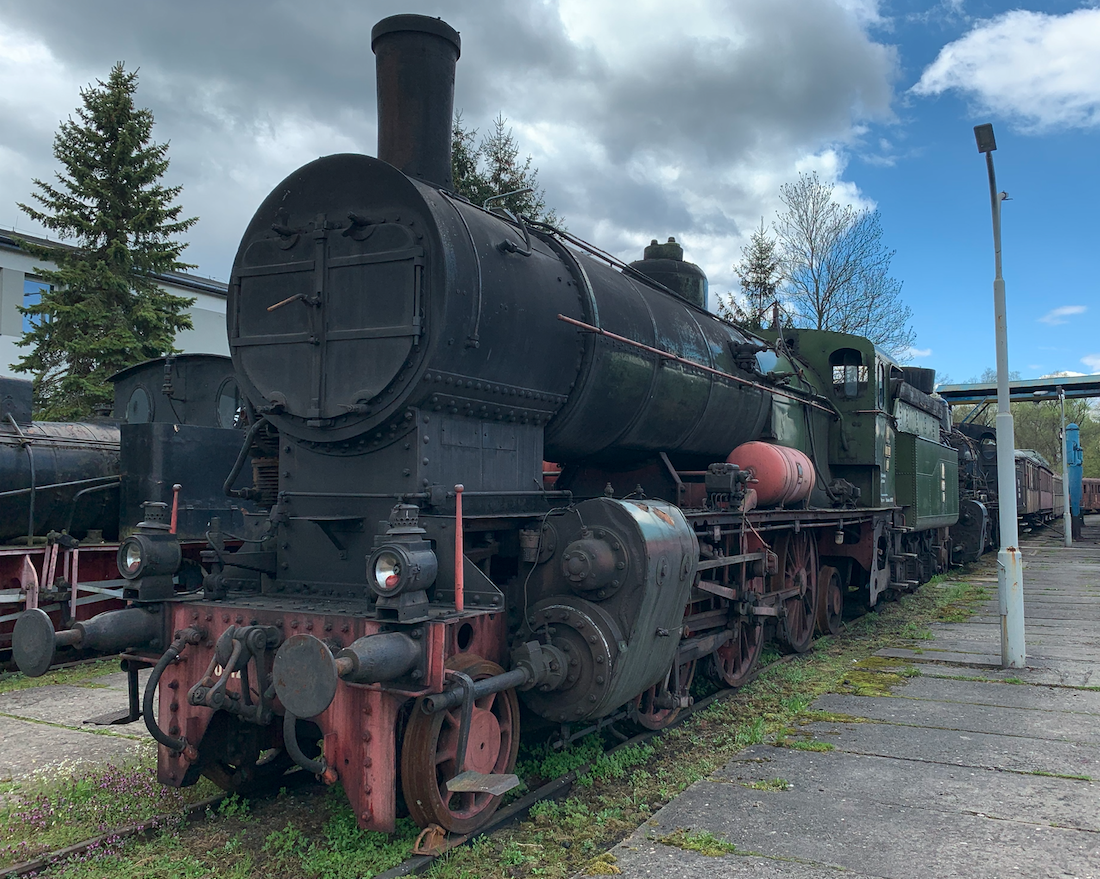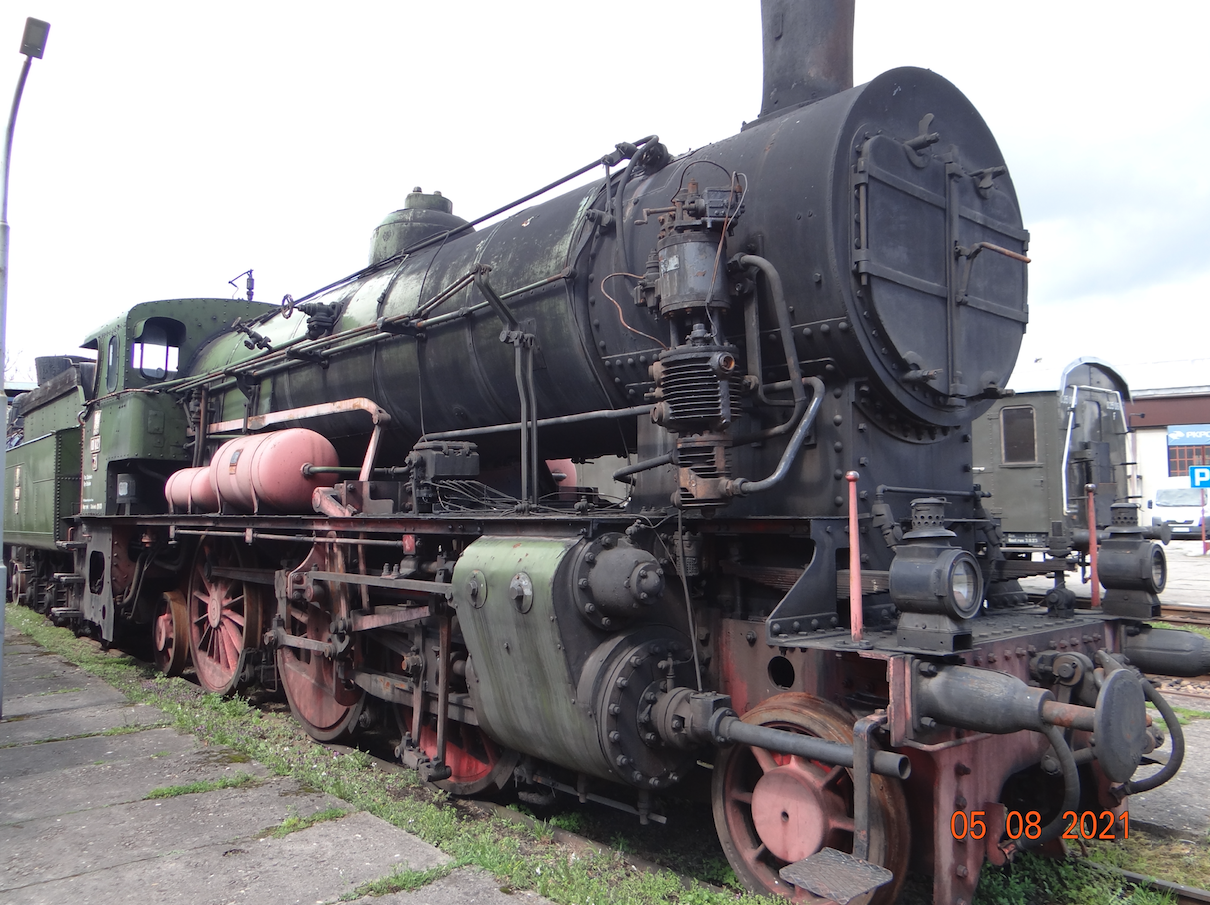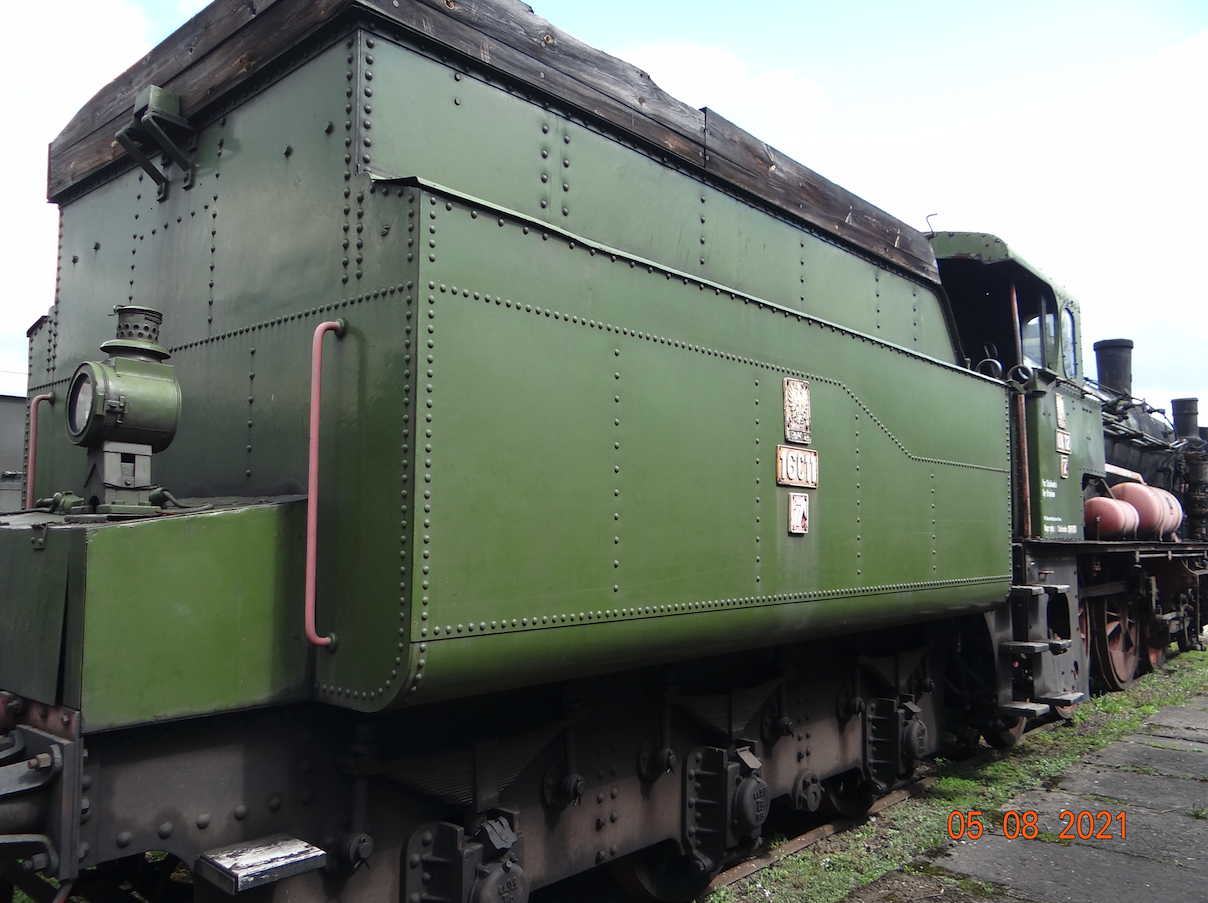Chabówka 2021-12-23
Steam locomotive Ol12-7.
The Series 329 steam locomotive is an Austrian-made steam locomotive. A superheater was developed for the boiler of this locomotive and the locomotive received the designation of series 429, which was designated Ol12 in the Polish State Railways. The steam locomotive was manufactured by the company Staats-Eisenbahn-Gesellschaft (StEG) in Vienna. The steam locomotive has a 1'C1 (1-3-1) axle system, i.e. the Polish designation "l". The steam locomotive was designed by the Austrian engineer Karl Gölsdorf. The series 429 steam locomotives were produced in the period 1909 - 1917.




Saturated steam and superheated steam.
We need to write a few sentences about changing water to wet steam and then to dry steam. Already at the beginning of the 19th century, scientists knew that the efficiency of the steam engine increases with the increase of the temperature of the wet steam, which turns into gas, i.e. there are no more water molecules in it. One kg of water at 200 degrees C produces 125 liters of steam at a pressure of 15 atm. However, at the same pressure, at 350 degrees C, we get 165 liters of this vapor. That is 32% more, with a slightly higher amount of energy supplied (burning coal). What's more. The superheated steam behaves like a gas and when released into the engine cylinder, it expands without condensation and does more work. Superheated steam, i.e. dry steam, is obtained by superheating saturated steam in a superheater. So there must be another installation in the boiler.
In steam locomotives it was not always necessary to use a superheater and many locomotives were still built without a wet steam superheater. Such locomotives were easier to build and repair. Many shunting locomotives in the 20th century were built without superheaters.
In 1839, the Hawthorn brothers performed the first tests of superheater assembly in steam locomotives in England. They placed in the smoke box a chamber with tubes for conducting wet steam. However, it was not until 1892 that the German engineer Wilhelm Schmidt built a boiler and a steam engine for superheated steam. He also built a steam engine that had triple expansion. In 1897, a Schmidt superheater was successfully installed in a steam locomotive.
Ol12 steam locomotive.
After the Great World War, there were 106 Ol12 steam locomotives in PKP. These were steam locomotives, which until then served passenger trains in the Austrian partition. In 1945, there were still 47 Ol12 steam locomotives in stock. They were operated in the southern part of Poland on lines with low passenger and goods traffic. The locomotives were in operation until 1966.
The locomotive is made of steel sheets joined with rivets. The boiler with a steam working pressure of up to 15 atm is equipped with a steam superheater. At the front, the boiler is equipped with a double-leaf door, which is rarely used. The locomotive was equipped with kerosene lighting. Braking system based on compressed air installation. The compressor is located in the front of the locomotive on the right side. Air tanks are placed on the sides of the boiler. Mechanic's booth, the so-called half-booth; part belongs to the steam engine and part belongs to the tender. Tender made of metal sheets joined with rivets and holds 16 m3 of water and 6,800 kg of coal. The Tendra refuge is equipped with three axles with running wheels. A toolbox was placed at the end of the tender.
Steam locomotive Ol12-7.
Until now, only one Ol12-7 steam engine, factory number 3849, has been preserved, which is an exhibit at the Chabówka open-air museum. This steam locomotive was manufactured in 1912. The locomotive went to work in the Austrian partition. In 1918, it was entered into the state of the Polish State Railways. After the Second World War, in 1947, the Ol12-7 steam locomotive operated in southern Poland. In the 60 years it was in the state of MD Zagórz, then MD Żurawica. In August 1966, the locomotive was removed from the PKP inventory. In September 1973, the locomotive was handed over to the Railway Museum in Warsaw. In September 1991, the locomotive was transported to Jaworzyna Śląska. In 1993, the locomotive was rebuilt at ZNTK in Piła. It ended up in the Chabówka open-air museum and was sometimes sent on a trail with occasional trains. Another revision repair should be performed by June 29, 2012.
The locomotive can haul a train weighing 310 tons at a speed of 80 km / h. The specimen in Chabówka is painted in the typical colors of passenger steam locomotives used in PKP. Compared to the original, the locomotive received an electrical installation and an elevated coal box by adding boards made of boards.
T-T data of the Ol12-7 steam locomotive:
Driving wheels diameter 1.57 m. Roller diameter 0.87 m. Steam pressure in the boiler 15 atm. The heating area of the boiler is 119.6 m2. Superheater heating area 30.0 m2. Grate area of 3.1 m2. Service weight 61,200 kg. Design speed 80 km / h. Tender 16 C series 11. Water supply 16 m3. Coal stock 6,800 kg. The service weight tends to 39,000 kg. Total service mass of the locomotive 100 200 kg. Total length 16.95 m. Height 4.65 m.
Written by Karol Placha Hetman
